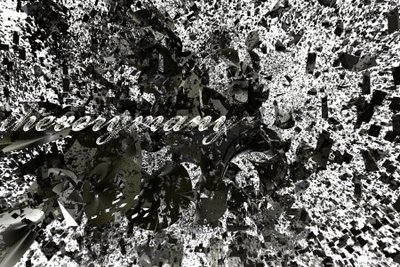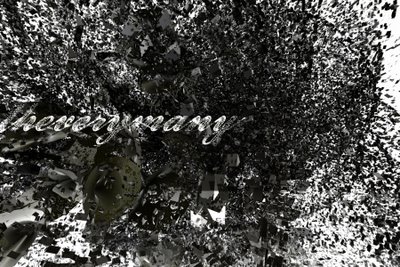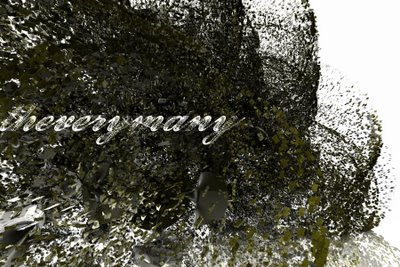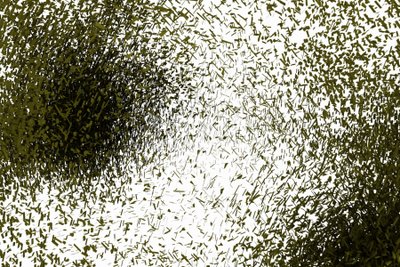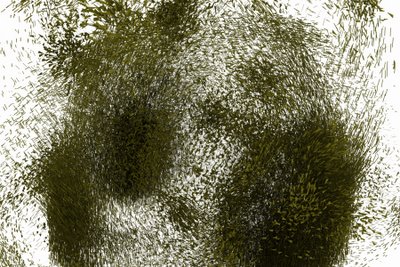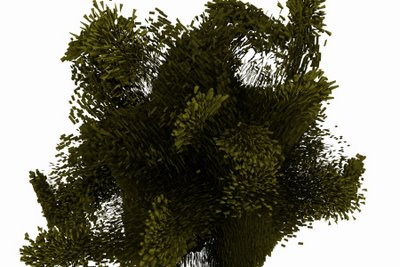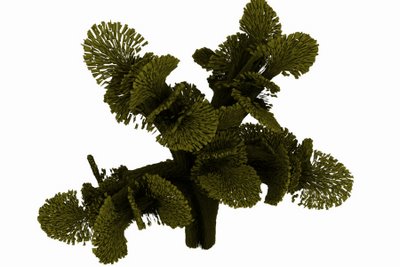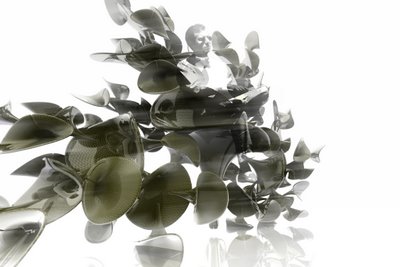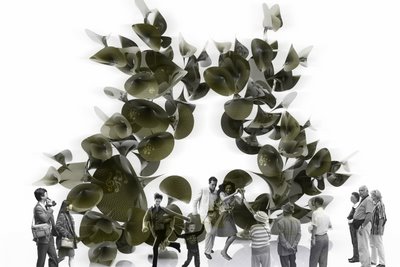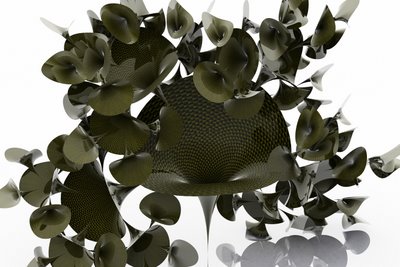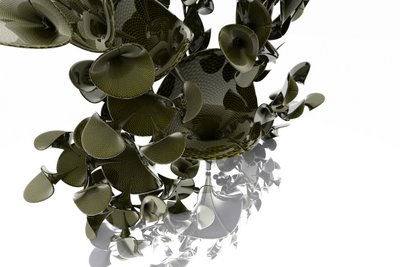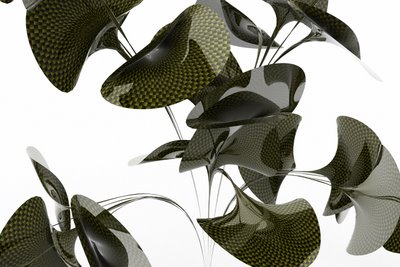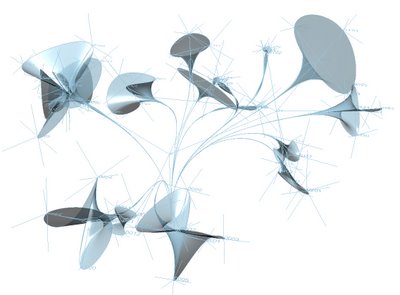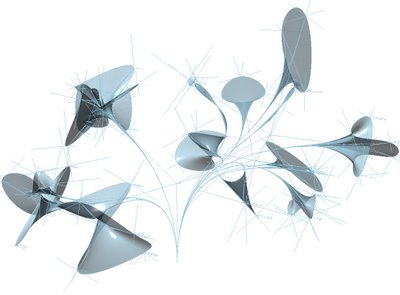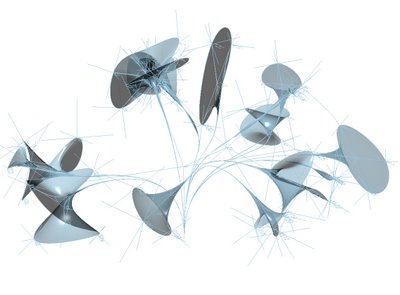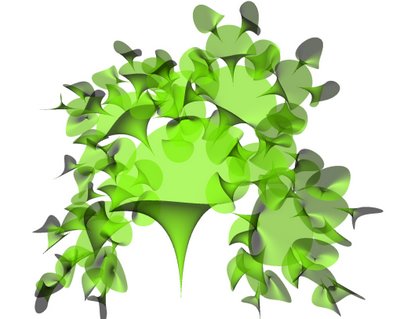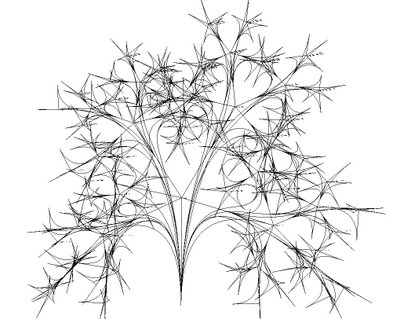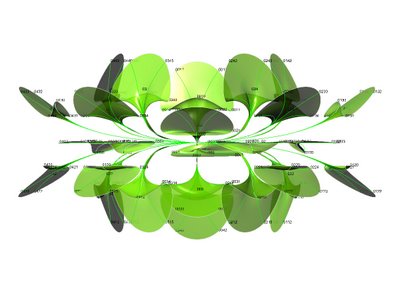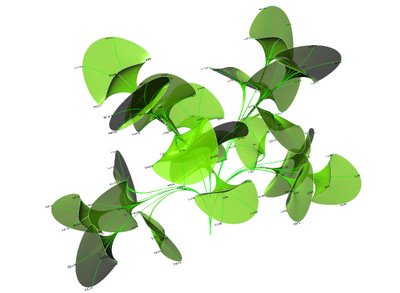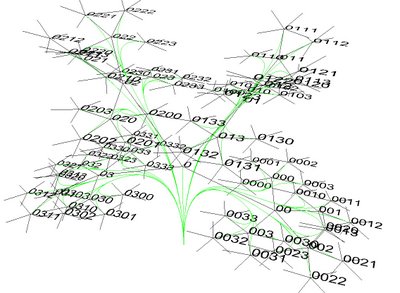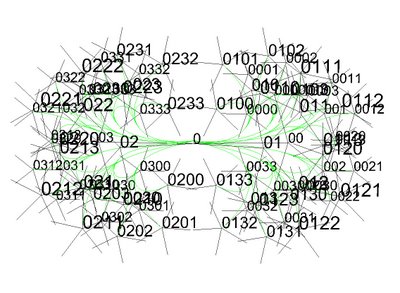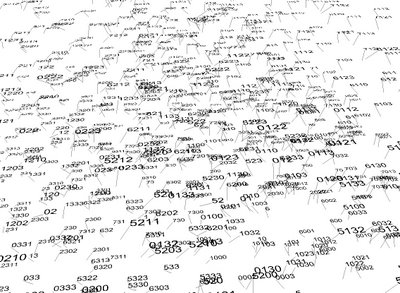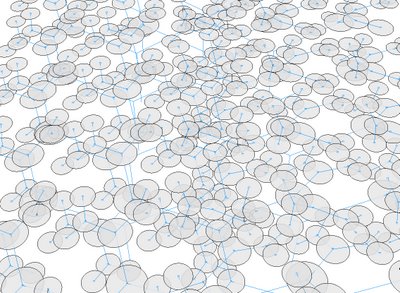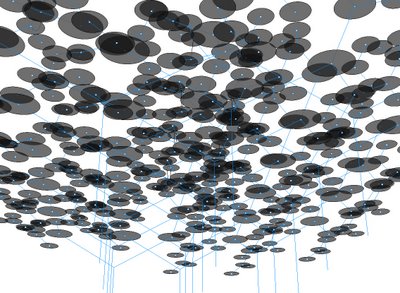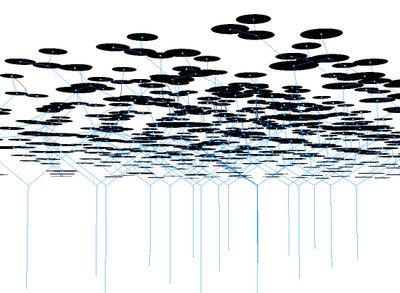GrGroGrow | … / June 2006 "Study on Growth..."
Exploration : MARC FORNES / THEVERYMANY™ Design, Research & Computation: Marc Fornes
Texts are obsolete...
PARTICULE SYSTEM (ie Wikipedia.org)
The term PARTICLE SYSTEM refers to a computer graphics technique to simulate certain fuzzy phenomena, which are otherwise very hard to reproduce with conventional rendering techniques to produce realistic game physics. Examples of such phenomena which are commonly done with particle systems include fire, explosions, smoke, flowing water, sparks, falling leaves, clouds, fog, snow, dust, meteor tails, or abstract visual effects like glowy trails, etc.
TYPICAL IMPLEMENTATION
Typically the particle system's position in 3D space or motion therein is controlled by what is called the emitter.
The emitter is mainly characterized by a set of particle behavior parameters and a position in 3D space. The particle behavior parameters might include spawning rate (how many particles are generated per unit of time), particle initial velocity vector (i.e. which way will it go when it is emitted), particle life (how much time does each individual particle live before being extinguished), particle color and variations throughout its life, and many more. It is common for all or most of these parameters to be fuzzy, in the sense that instead of absolute values, some central value and allowable random variation is specified.
A typical particle system update loop (which is performed for each frame of animation) can be separated into two distinct stages, the parameter update/simulation stage and the rendering stage.
SIMULATION STAGE
During the simulation stage, the amount of new particles that must be created is calculated based on spawning rates and interval between updates, and each of them is spawned in a specific position in 3D space based on emitter position and spawning area specified. Also each of the particle's parameters, like velocity, color, life, etc, are initialized based on the emitter's parameters. Then all the existing particles are checked to see if they have exceeded their lifetime, in which case they are removed from the simulation. Otherwise their position and other characteristics are modified based on some sort of physical simulation, which can be as simple as adding the velocity to the current position, and maybe accounting for friction by modulating the velocity, or as complicated as performing physically-accurate trajectory calculations taking into account external forces. Also it is common to perform some sort of collision checking with specified 3D objects in order to make the particles bounce off obstacles in the environment. However particle-particle collisions are rarely used, as they are computationally expensive and not really useful for most of the simulations.
A particle system has its own rules that are applied to every particle. Often these rules involve interpolating values over the lifetime of a particle. For example, many systems have particles fade out to nothingness by interpolating the particle's alpha value (opacity) during the lifetime of the particle.
RENDERING STAGE
After the update is complete, each particle is rendered usually in the form of a textured billboarded quad (i.e. a quadrilateral that is always facing the viewer). However, this is not necessary, the particle may be rendered as just a single pixel in small resolution/limited processing power environments, or even as a metaball in off-line rendering (isosurfaces computed from particle-metaballs make quite convincing liquid surfaces). Finally 3D meshes can also be used to render the particles.
theverymany within particles dynamics...
V...
Growing leafs system - as a shadows maker for public a bench
As installation for public park with discreet light&sound devices
"Growing on form..."
Proposal : Leafs in mats of Carbon&Armide pre-preg with Epoxy resin... Each leaf from one generation can be repetitive for dramatic decrease of cost via reuse of tooling...
V2.0
FROM FRACTALS TO L-SYSTEMS... going from unifrom growing generation to an alphabet based one...
L-SYSTEMS (i.e. Wikipedia)
"The recursive nature of the L-system rules leads to self-similarity and thereby fractal-like forms which are easy to describe with an L-system. Plant models and naturally-looking organic forms are similarly easy to define, as by increasing the recursion level the form slowly 'grows' and becomes more complex.
L-system grammars are very similar to the semi-Thue grammar (see Chomsky hierarchy). L-systems are now commonly known as parametric L systems, defined as a tuple
G = {V, S, ω, P},
where
* V (the alphabet) is a set of symbols containing elements that can be replaced (variables) * S is a set of symbols containing elements that remain fixed (constants) * ω (start, axiom or initiator) is a string of symbols from V defining the initial state of the system * P is a set of rules or productions defining the way variables can be replaced with combinations of constants and other variables. A production consists of two strings - the predecessor and the successor.
The rules of the L-system grammar are applied iteratively starting from the initial state.
An L-system is context-free if each production rule refers only to an individual symbol and not to its neighbours. If a rule depends not only on a single symbol but also on its neighbours, it is termed a context-sensitive L-system.
If there is exactly one production for each symbol, then the L-system is said to be deterministic (a deterministic context-free L-system is popularly called a D0L-system). If there are several, and each is chosen with a certain probability during each iteration, then it is a stochastic L-system.
V1.0
Branching structure installation set inspired from the french movie: "Le Maire, L'arbre et la Mediatheque" directed by Eric Rohmer, 1993
We've just tragically lost our socialist mayor in Pau... The site on the border of a park became politically too problematique... They had to stop our project of Mediatheque...
(context: at the time the Zha Pau Library project just stopped - after three years of intense research and development)
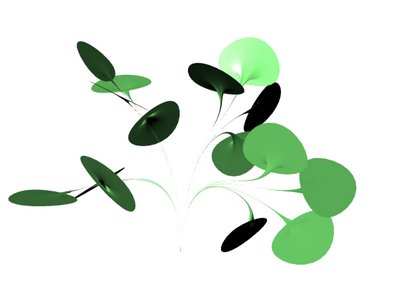
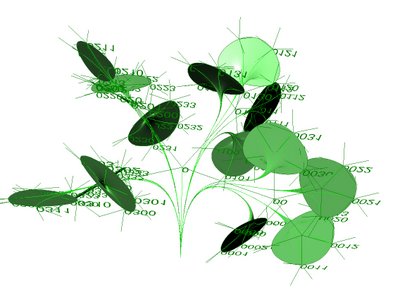
LET'S BUILD A TREE... Within the architectural world, the history and theory branch has always been arguing about too literal translation. Building the diagram or understanding it as conceptual model in order to extrapolate in terms of design? Within a bottom up approach, building a performative model of tree, where will that going to lead us?

